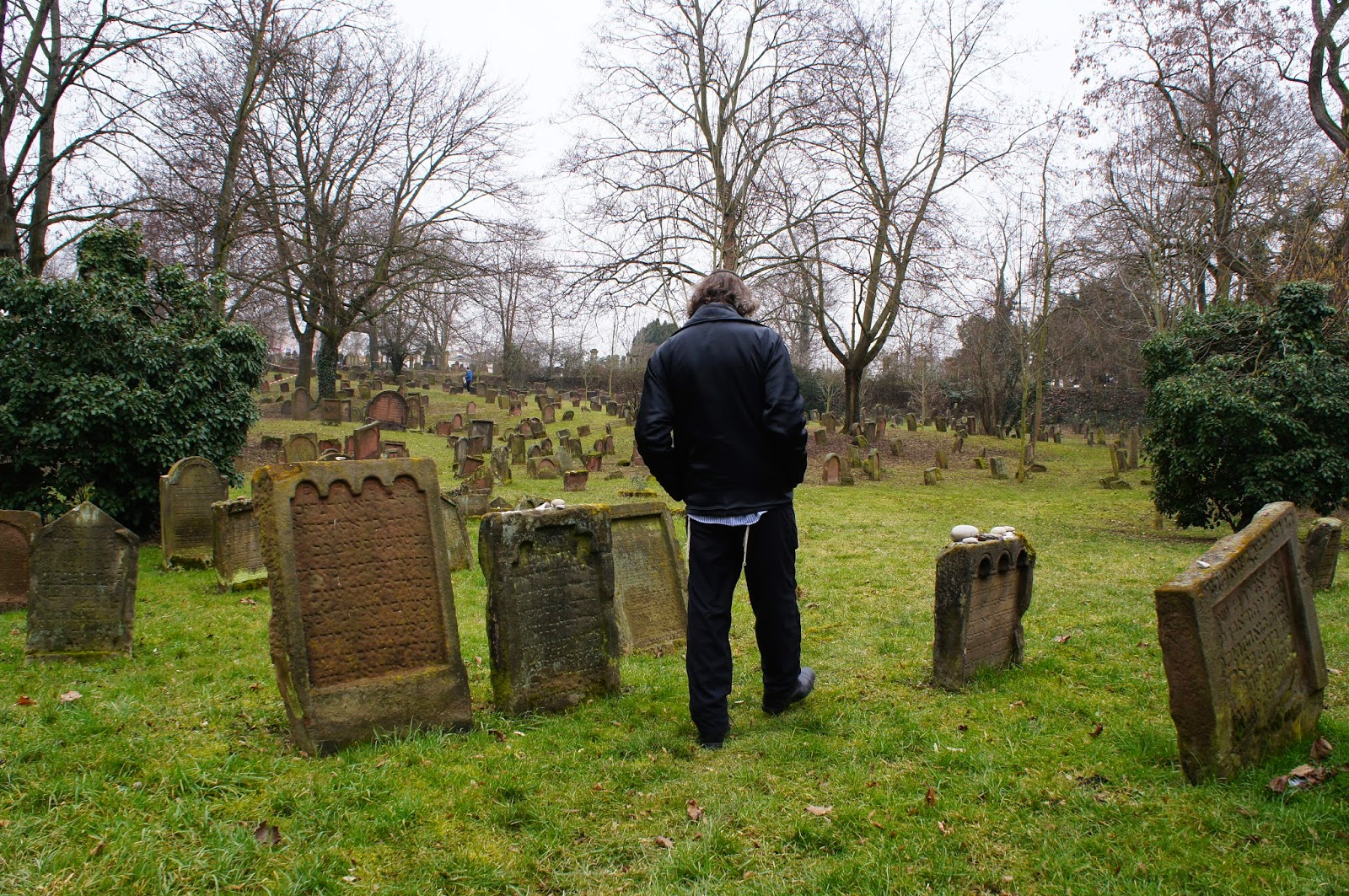JACOB JR, MY JEWISH WORLD - ALTER JÜDISCHER FRIEDHOF, WORMS/GERMANY
"REMEMBER THE DAYS OF OLD, CONSIDER THE YEARS OF AGES PAST." DEUT. 32:7
Sunday, Tevet 15, 5776. December 27, 2015
Shalom! World.
Shalom! World.
With good reason Worms lays claim to be one of the oldest and most historically interesting towns of Germany.
 The Jewish cemetery and the Synagogue together attest to almost 1.000 years of Jewish life in Worms. The cemetery is one of the most outstanding and impressive places in the city. Worms is one of three cities along the Rhine river which were centers of Jewish intellectual life during the Middle Ages. These three cities, Speyer, Worms and Mainz, are together known as SHUM, an abbreviation based on the initial letters of the Hebrew names of the cities.
The Jewish cemetery and the Synagogue together attest to almost 1.000 years of Jewish life in Worms. The cemetery is one of the most outstanding and impressive places in the city. Worms is one of three cities along the Rhine river which were centers of Jewish intellectual life during the Middle Ages. These three cities, Speyer, Worms and Mainz, are together known as SHUM, an abbreviation based on the initial letters of the Hebrew names of the cities.  At this time many great Jewish intellectuals studied and taught at the yeshiva (Talmud school) in Worms. Among the most famous of these are Rashi (Rabbi Solomon ben Isaac, 1040 - 1105), the outstanding commentator on the Talmud. Other famous names are Isaac ben Eleazar ha-Levi and Jacob ben Yakar.
At this time many great Jewish intellectuals studied and taught at the yeshiva (Talmud school) in Worms. Among the most famous of these are Rashi (Rabbi Solomon ben Isaac, 1040 - 1105), the outstanding commentator on the Talmud. Other famous names are Isaac ben Eleazar ha-Levi and Jacob ben Yakar. |
| "THE VALLEY OF THE RABBIS" Well known rabbis of Worms are buried here. |
 Enter the cemetery through the wooden gate and walk a few stops further to two tombstones situated on the left of the path. A great number of pebbles and slips of paper are lying on these tombstones. Here Rabbi Meir of Rothenburg and Alexander ben Salomon Wimpfen are buried. Rabbi Meir of Rothenburg was the most esteemed German Rabbi of the Middle Ages. In 1286, when a great number of Jews wished to emigrate to Palestine, Rabbi Meir was takem prisioner. The emperor ordered this imprisionament because he hopped that imprisoning such a respected and prominent Rabbi would prevent the Jews from emigrating. He did not want to lose a very reliable source of income, the so caalled "Judensteuer", a tax raised from Jews only. Rabbi Meir died in 1293 in prision. After his death the Jews were of course interested in byrying their Rabbi properly. But his body was not released. The authorities tried to blackmail the Jews into paying for the corpse. It was not until 14 years later that the Jews were able to pay the high ransom. Alexander ben Salomon Wimpfen, a rich merchant, was prepared to give everything he owned so that Rabbi Meir's mortal remains could be freed. He only made one condition: he wanted to be buried next to Rabbi Meir. A short time later he died. His request was honored, since the year 1307 the two of them have rested side by side.
Enter the cemetery through the wooden gate and walk a few stops further to two tombstones situated on the left of the path. A great number of pebbles and slips of paper are lying on these tombstones. Here Rabbi Meir of Rothenburg and Alexander ben Salomon Wimpfen are buried. Rabbi Meir of Rothenburg was the most esteemed German Rabbi of the Middle Ages. In 1286, when a great number of Jews wished to emigrate to Palestine, Rabbi Meir was takem prisioner. The emperor ordered this imprisionament because he hopped that imprisoning such a respected and prominent Rabbi would prevent the Jews from emigrating. He did not want to lose a very reliable source of income, the so caalled "Judensteuer", a tax raised from Jews only. Rabbi Meir died in 1293 in prision. After his death the Jews were of course interested in byrying their Rabbi properly. But his body was not released. The authorities tried to blackmail the Jews into paying for the corpse. It was not until 14 years later that the Jews were able to pay the high ransom. Alexander ben Salomon Wimpfen, a rich merchant, was prepared to give everything he owned so that Rabbi Meir's mortal remains could be freed. He only made one condition: he wanted to be buried next to Rabbi Meir. A short time later he died. His request was honored, since the year 1307 the two of them have rested side by side.Not only was Worms a center of Jewish intellectual life during the Middle Ages, it is also the oldest Jewish cemetery in Europe. An inscription at the Synagogue states that the Synagogue was built in the year 1034. It is very likely that the Jewish cemetery was laid out at this time. As you pass the tree you can look down the slope to the left where you see the oldest tombstone in the cemetery. The oldest tombstone found in the cemetery dates from the year 1076 and the inscription will tell you the man was called Jacob ha Bachur and was a bachelor.
 |
| THE OLDEST TOMB IN EUROPE, JACOB ha BACHUR: (1076 c.e.) 11TH CENTURY. |
Shalom! Aleichem.
Cultural Support: Jacob Jr. B.A.C.E., avec L'Integration d'Association avec Israel et dans le Monde/Cz .






Comments
Post a Comment